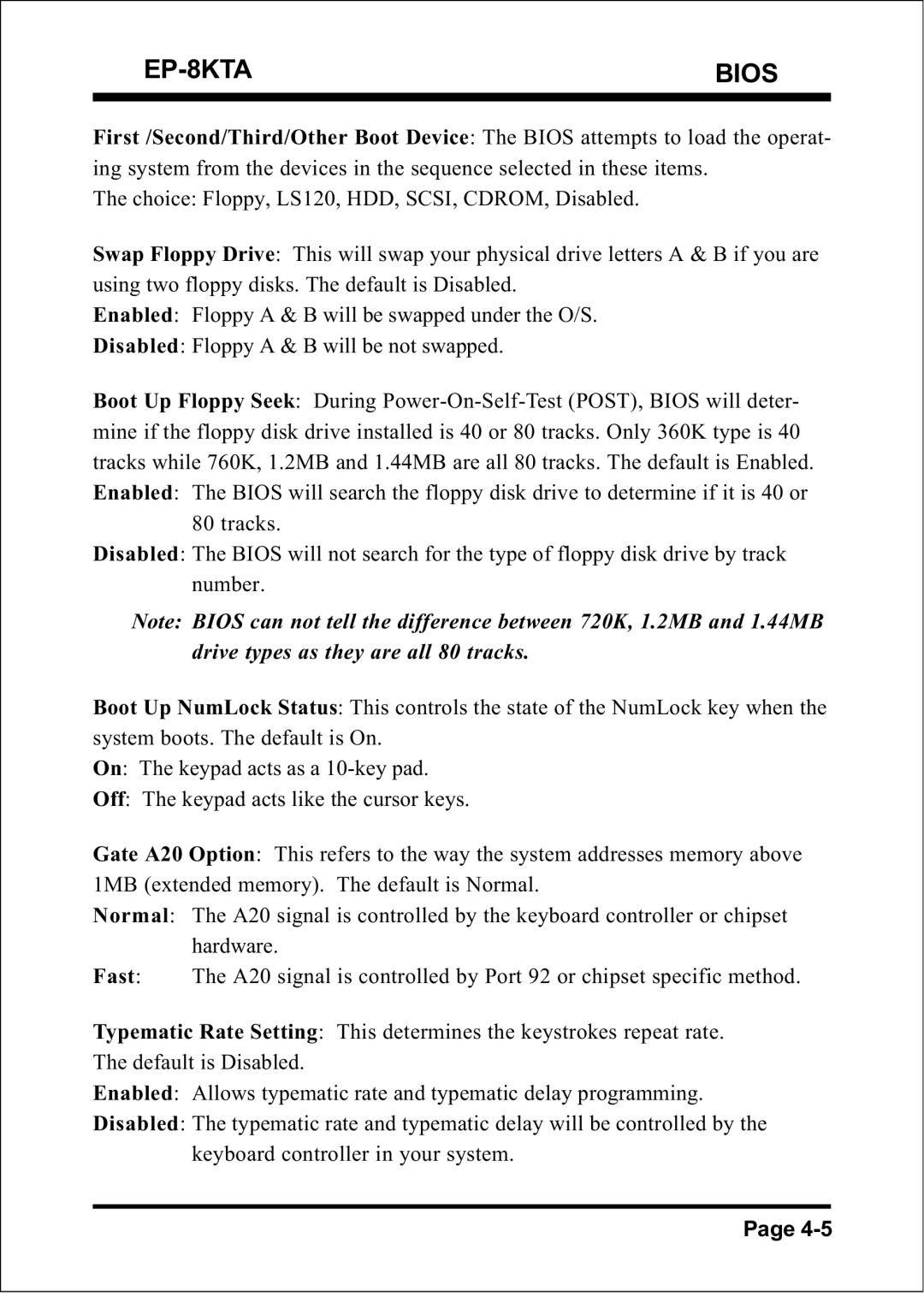
| BIOS |
|
|
|
|
First /Second/Third/Other Boot Device: The BIOS attempts to load the operat- ing system from the devices in the sequence selected in these items.
The choice: Floppy, LS120, HDD, SCSI, CDROM, Disabled.
Swap Floppy Drive: This will swap your physical drive letters A & B if you are using two floppy disks. The default is Disabled.
Enabled: Floppy A & B will be swapped under the O/S.
Disabled: Floppy A & B will be not swapped.
Boot Up Floppy Seek: During
80 tracks.
Disabled: The BIOS will not search for the type of floppy disk drive by track number.
Note: BIOS can not tell the difference between 720K, 1.2MB and 1.44MB drive types as they are all 80 tracks.
Boot Up NumLock Status: This controls the state of the NumLock key when the system boots. The default is On.
On: The keypad acts as a
Off: The keypad acts like the cursor keys.
Gate A20 Option: This refers to the way the system addresses memory above 1MB (extended memory). The default is Normal.
Normal: The A20 signal is controlled by the keyboard controller or chipset hardware.
Fast: The A20 signal is controlled by Port 92 or chipset specific method.
Typematic Rate Setting: This determines the keystrokes repeat rate. The default is Disabled.
Enabled: Allows typematic rate and typematic delay programming.
Disabled: The typematic rate and typematic delay will be controlled by the keyboard controller in your system.
Page
